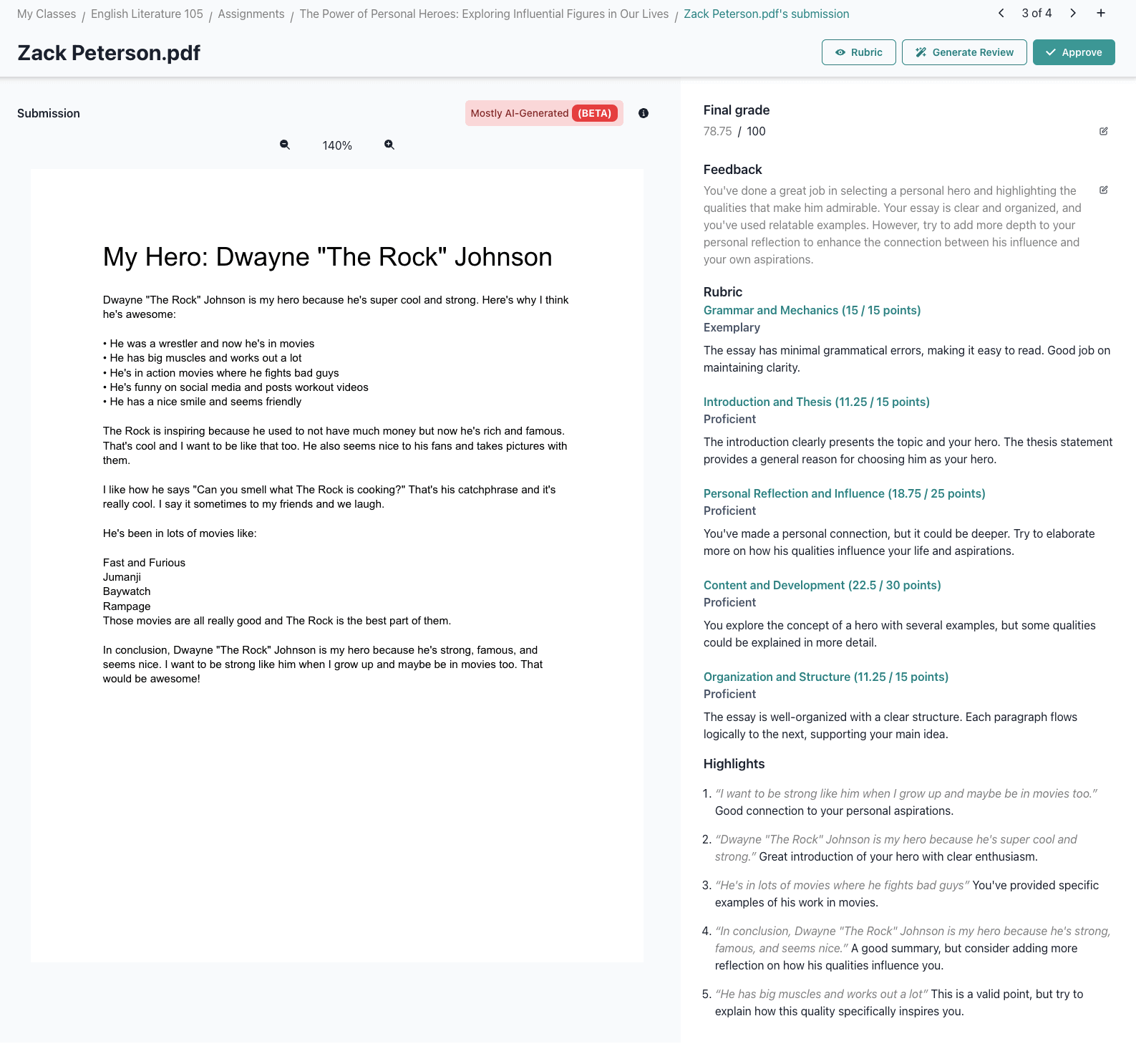While most English teachers spend weekends buried under stacks of essays, one middle school instructor in West Texas has revolutionized her approach to assessment. Jessica Reynolds (a pseudonym she requested for privacy) has developed a system that allows her to grade 100 student essays in just over three hours without sacrificing quality feedback.
The Weekend Paper Stack Crisis
“English teachers take home too many papers,” Reynolds explains. “I learned that in my early years of teaching.”
The traditional approach—marking every grammatical error, commenting on structure, and providing detailed feedback—typically takes 10-15 minutes per essay. For a teacher with 100 students, that’s potentially 25 hours for a single assignment, explaining why burnout has become so prevalent in the profession.
A Different Assessment Approach
Reynolds’ classroom operates differently. Her students write regularly—completing short constructed responses twice weekly and extended essays every few weeks—yet she isn’t drowning in paperwork.
Her method relies on several innovative approaches:
- Strategic focus on specific elements rather than trying to fix everything
- A holistic assessment approach that identifies quality quickly
- Technology that streamlines the submission process
- Carefully structured peer review systems
“I’m not their editor,” Reynolds states, representing a fundamental shift in how writing instruction is approached.
The Two-Minute Essay Assessment
Perhaps most surprising is Reynolds’ ability to assess an essay in approximately two minutes—a claim that might sound impossible until you understand her method.
“Within the first three sentences, you know whether this will be a five, four, three, two, or one,” she explains. “If they haven’t started well, they’re already at a lower score.”
Instead of reading every word and marking every error, she looks for key indicators of quality:
- The strength of the controlling idea in the opening
- How evidence is incorporated in the first paragraph
- Sentence construction and transitions
- Grade-appropriate vocabulary
“You can pinpoint specific sections without needing to grade the entire piece,” she notes.
The Secret Weapon: Student Peer Review
The most revolutionary aspect of Reynolds’ approach isn’t how quickly she grades—it’s who performs much of the assessment.
“The best feedback is peer-to-peer,” Reynolds reveals. By implementing a structured system, she has transformed her students into active participants in the assessment process.
This isn’t simply having students swap papers. Her approach is strategic and purposeful:
- Reviews are conducted anonymously to ensure fairness
- Students receive thorough training on using rubrics
- Peers are matched based on specific learning needs
- Students focus on different aspects of writing during reviews
“I’m very thoughtful about who I partner together and what I want them to accomplish,” she explains. “I choose peers based on specific student needs.”
Reynolds ensures students understand the assessment criteria by showing examples of different quality levels and practicing with sample essays.
“They know what score they’ll receive before submitting because they’ve used the rubric extensively through the year,” she says.
Beyond Time-Saving: Learning Benefits
While the time efficiency is impressive, the learning benefits may be even more significant. Her approach shows that properly structured peer review:
- Develops critical thinking skills
- Deepens understanding of assessment criteria
- Provides diverse feedback perspectives
- Builds student ownership of writing
- Creates a collaborative classroom culture
By shifting from a teacher-centered to a student-centered approach, Reynolds has created a more engaging and effective learning environment.
“We spend more time crafting writing rather than just grading it,” she emphasizes.
Implementation Challenges
This approach requires careful planning and patience. Students need extensive training with rubrics and practice with sample essays before they can effectively evaluate each other’s work.
“Getting students to this point takes all year,” Reynolds acknowledges. “It’s an ongoing process where teachers must thoughtfully pair students and determine which writing aspects to focus on at different times.”
Is This Approach Right for Every Teacher?
While transformative in Reynolds’ classroom, this method may require adaptation for different contexts like AP courses, college preparatory classes, or elementary grades. Some teachers may also face institutional policies requiring traditional grading.
However, the core principles—strategic focus, holistic assessment, and student involvement—can be adapted to various teaching environments.
The Bottom Line
For teachers sacrificing weekends to grading, Reynolds’ approach offers a promising alternative that combines strategic assessment techniques with student peer review.
As the teaching profession continues facing challenges with workload, innovative approaches like this may represent the future of writing instruction—where students develop as writers through active participation in a collaborative assessment process rather than through endless teacher corrections.
“I don’t want to spend all my time grading,” Reynolds concludes. “I want to spend my time teaching and helping students grow as writers.”


